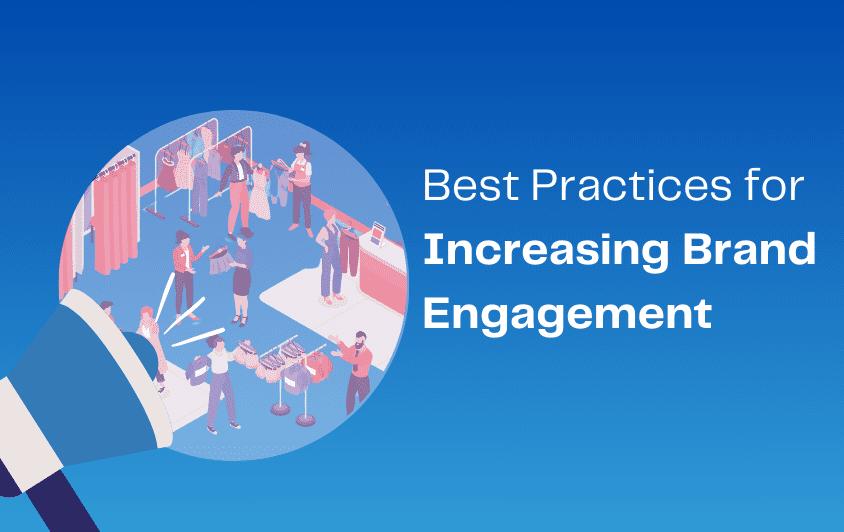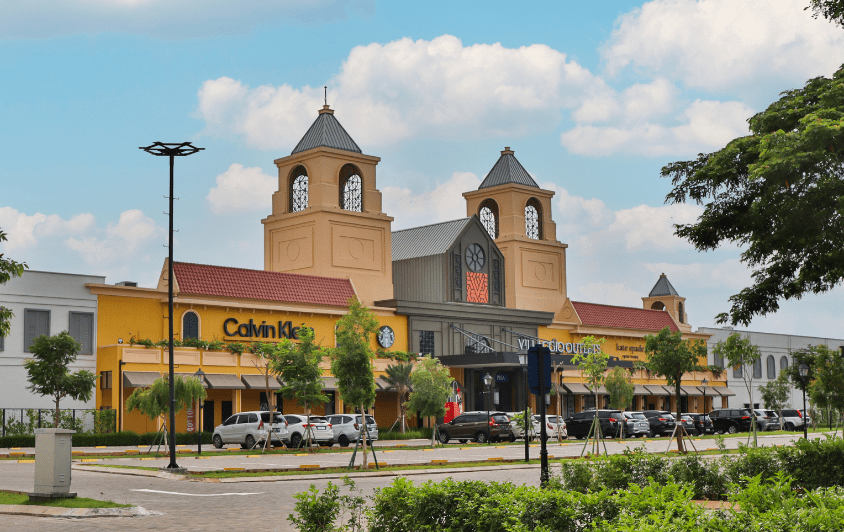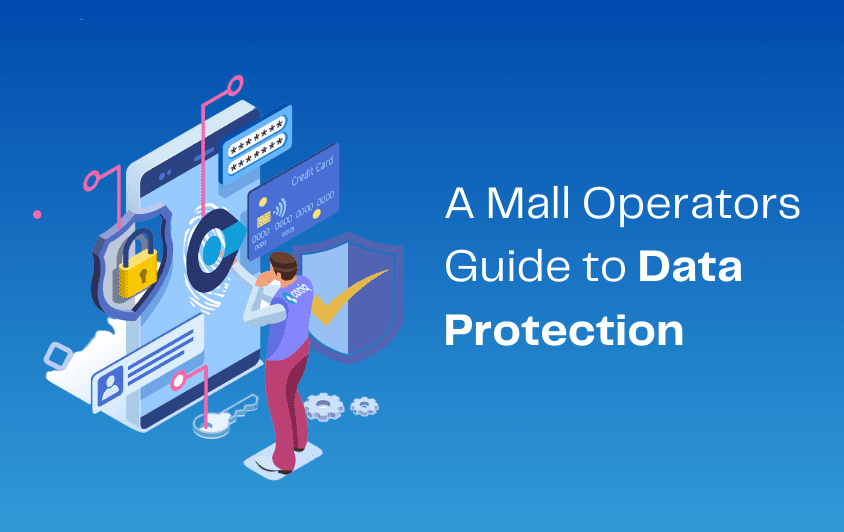Shopping centers with a strong retail loyalty program grow revenue 2.5 times faster than their competitors. This article focuses on the importance of customer loyalty, including the different types of retail loyalty programs. Understanding the different types of loyalty programs is essential when choosing which reward program will work best for your shopping centers, retail brands, outlets, business improvement districts, and other retail destinations.
What makes a retail loyalty program ‘strong’?
While it may seem that the statistic above gives enough reason to implement a retail loyalty program in your shopping mall, this is a simple view of a more complex issue. The keyword ‘strong’ gives a clue to this complexity – only ‘strong’ loyalty marketing programs generate revenue.
The importance of having a customer loyalty program
Most importantly, your loyalty program must attract your customers. Ensure the benefits are simple to understand so a customer instantly knows what they must do to get a reward and what their reward will be. The mall rewards program must have a simple omnichannel signup experience online, on mobile, and at the center.
Furthermore, the reward must be valuable enough to the customer to justify the (minimal) effort of signing up, plus the consideration of giving you their personal details. Customers are becoming increasingly savvy about who they share their details with and what they expect to get from it. This is called the data value exchange. As an ‘exchange,’ the more you ask your customers, the more value you need to return through the program!
Shopping center loyalty programs are much stronger when the majority of the retailers in the mall agree to participate, allowing customers a wide range of incentives across different stores. Having too many hurdles and exclusions is the surest path to your customers becoming disengaged.
Rewarding your loyal customers
Find out exactly what rewards are most appropriate for your customers. Your retail loyalty program should allow you to collect data from numerous customer touchpoints. To start with, you collect vital information during the signup process, e.g. contact details and demographic information. To personalize the customer experience, you should collect further customer data each time a member opens an email, collects points, and redeems an offer. This allows your marketing team to build a more comprehensive idea of their audience and use this information to send the most relevant communications, rewards and offers targeted to predefined segments.
The reward must also be compelling enough so that customers continue to use your loyalty program time after time. The goal of a loyalty program is to create long-lasting relationships, so if shoppers churn after a short period because of the customer journey or they forget about the program entirely, your program will fail!
Finally, powerful loyalty programs are those that, over time, can be automated for replication once they achieve successful results. Meaning you can personalize and send emails with little effort from the marketing team. This gives marketing the time to focus on other value-adding activities, such as sourcing new offers and creating engaging content for future activities.
Types of Retail Loyalty Programs
There are many different types of customer loyalty programs. The list below defines and explains different types of retail loyalty programs and the benefits they bring to your business.
Virtual currency program
Transactional loyalty programs allow members to earn a predefined credit when purchasing in participating stores. Members can then use these credits on future purchases to reduce the transaction price. For example, every time a member spends $500, they receive a $5 credit in their loyalty account. Members can then use the money in the loyalty account for future purchases.
Points-based loyalty program
A very popular rewards mechanism is a points based loyalty program, where loyalty members earn points for taking specific actions. These actions include making purchases or certain behavior like visiting a specific location and breaking a geofence. Members can access a ‘rewards catalog’ showing which incentives they can redeem for each earned point.
An example of a points-based loyalty program is 50 points for free coffee and 1000 points for a 10% off voucher. Customers can redeem just a few points for a small reward or save points for a larger reward. While this is a form of transactional loyalty, the personalization of offers leads to emotional brand loyalty.
Stamp reward program
A stamp/token/star is awarded to customers who take specific actions, e.g. making a purchase or visiting the information desk. Cap stamps at a certain number, so they redeem them for a reward or experience when members collect them. No partial redemption is permitted, and rewards cannot be ‘stacked’ to receive a greater reward. Typical examples of this include a free coffee after the purchase of ten hot drinks.
Tiered loyalty scheme
By definition, a tiered loyalty program is where customers enjoy offers increasingly better benefits depending on their tier. The program then ranks members based on the customer’s metrics. Members can increase their rank by spending, engaging with the brand, or a combination of both. As a result of rising tiers, the member unlocks different rewards/experiences. The loyalty program encourages customers to continue spending and solidifies their brand loyalty.
One way to set the program up is by increasing a member’s tier who spends a certain amount or makes enough visits to a mall. Members who have spent a total of $1,000 through the loyalty scheme within one year are entitled to VIP rewards. Examples of exclusive rewards are valet parking for a discounted rate, early access to sales, leaving reviews, etc.
Unlike points collection, the redemption of an offer does not reduce their ‘lifetime points total,’ allowing them to continue rising through the tiers rather than falling back upon a redemption. While more complicated to implement, this can have great rewards for emotional loyalty from your high-value customers.
Tourist loyalty program
These retail loyalty programs allow you to give special discounts or rewards to your tourist shoppers. Enabling you to understand where your tourist shoppers are coming from, how often, and where they are shopping. It is also possible to use the functionality of the signup forms to identify and partner with your most engaging tourism agencies, partners, and hotels.
Members loyalty program
Member loyalty programs can also be referred to as paid loyalty programs or subscription loyalty programs. They are an exclusive program that members are required to pay to join. In return, they receive discounts, offers, and invitations to members-only events. As members have invested in your loyalty program, they are more inclined to use it. However, they often form only transactional loyalty rather than emotional loyalty unless you are using excellent personalized communications in tandem. Paid programs are growing in popularity because these guarantee revenue to loyalty program owners.
Surprise and Delight program
An emotional loyalty program is where you offer shoppers targeted rewards based on their behavior and predicted value. A key element here is to surprise members rather than allowing them to select offers from a catalog of available rewards.
Gamification loyalty program
Gamification elements are used to unlock a specific reward. For example, shop at the center three times over the summer to win a gift voucher, or shop at four stores in one day. Design a gamification loyalty program to trigger certain behaviors as part of a larger program (e.g., driving repeat local visitors to a center over the summer period). These programs are often used in conjunction with another type of customer loyalty program. E.g., when your stamp card is redeemed, you can enter a draw for a special prize.
Mixing and matching loyalty
Hybrid or mix-and-match loyalty is one of the most effective ways to build customer loyalty. Your customer loyalty platform should combine many types of loyalty programs to make the perfect, customized customer loyalty program for your shopping center or retail business.
For example, a points program with a tiered structure that unlocks targeted and experiential rewards will create solid transactional loyalty and more deeply rooted emotional brand loyalty. Gamification could then be used to drive a repeat visit during quiet times. Then you could launch an ‘Invitation Only’ tier in specific centers to give extra special treatment to certain VIPs.
Hybrid loyalty programs that you can mix and match have agile loyalty propositions and evolve from center to center over time with no additional cost or complexity.
What type of loyalty program is right for your shopping mall?
A retail loyalty program can transform the success of your shopping center by enabling you to drive more footfall, repeat visits, and sales. So which type of retail loyalty program works best for you will depend on the specific goals you are working towards for your shopping center. However, your relationship with retailers will define how quickly you can generate this business value. Be sure to secure the support of your retailers and address several challenges you and your tenants may be struggling with when picking the ideal loyalty solution to address them.
Struggling to increase customer Spend per Visit (SPV)
Suppose your challenge is to focus on driving trade from existing customers. In that case, a simple mechanism is best to encourage customers to spend more per visit in your shopping center – points with an ‘earn and burn’ mechanism. Awarding points for each transaction and providing a catalog of earnable rewards gives the customer a reason to make additional purchases, especially as they get closer to the needed points balance. You can increase urgency by limiting the available time to collect these points, encouraging a splurge of purchases so the customer does not miss out.
Generate more foot traffic and attract more customers
If you struggle to get customers to your mall or retail destination, awarding points based on visits is a cost-effective way to entice members to visit. Rather than (or in addition to) earning points on making a transaction, you can award points when a customer breaks a geofence surrounding the shopping center. When this happens, a message should be automatically sent to the customer’s mobile informing them of their new points balance. Set geofences around popular locations such as transport hubs. When customers enter the area, they trigger a message displaying the offers available at the center, encouraging them to visit to earn and redeem points.
Are you aiming to increase dwell time in your mall?
If you find that your highest-spending customers spend longer in your shopping centers, We recommend offering experiential rewards rather than just monetary offers. For example, if customers can use points to earn a hands-free shopping experience, once redeemed, the customers will want to stay and shop for longer to take advantage of the service.
Another way to increase dwell time is to give offers for food and beverages. Customers who stop for refreshments often spend longer in the shopping center, giving them much more time to see something they cannot possibly resist purchasing!
Do you want to target high-net-worth individuals in your mall?
Your rewards catalog should cater to all spending levels, including high-net-worth individuals who may have different considerations from most of your shoppers. Even where you are not running a tiered program, ensure your catalog includes rewards that may be unattainable to most, e.g. rewards that could only redeem with thousands of pounds worth of points redemption. Rather than provide discounts at these levels (although even high net-worth individuals appreciate a bargain!), it may be more suited to offer luxury experiences such as personal shopping and invitations to exclusive events.
Want to increase customer engagement?
As mentioned above, it is essential that your loyalty program allows you to collect data on your customer’s shopping habits and that you use this data to inform your marketing campaigns. Segmenting your database into groups of customer profiles and sending only the offers/content that will interest them based on their past behaviors generates much more interest and loyalty to your center than one-size-fits-all emails. Having an online platform for information and rewarding customers allows you to form a shopping center brand to which your shoppers can grow attached. They will therefore naturally want to do more of their shopping with you. Adding points-based loyalty to that only increases engagement. Check it out in more detail in our article on point-based loyalty programs.
Conclusion
In summary, a simple points based loyalty mechanism allows you to engage your target audience in a cost effective way that is flexible enough to cater for all of your business goals.
To help you get this right, here are our five tips for effective customer loyalty:
- Create a compelling proposition that customers will keep coming back for again and again
- Ensure you are capturing enough good-quality data to build long-lasting relationships with your members
- Tailor your offers and rewards to your particular customers and the goals of your shopping mall
- Delight your customers at every step of the journey – use geofencing to entice them to enter your store and reward them for doing so
- Remain flexible in your offers, campaigns, and messaging. Constantly review the effectiveness of your program and make any changes necessary to cater to any changes in customer sentiment






